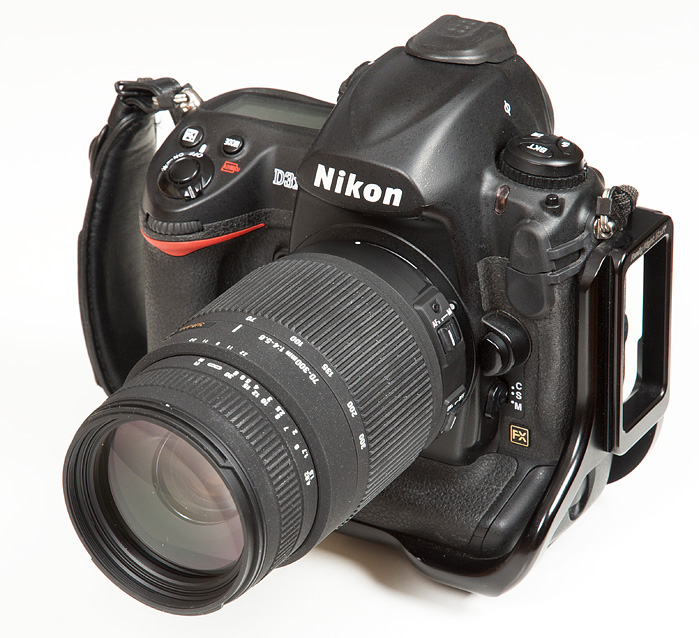|
Page 1 of 3

Review by Markus Stamm, published May 2011
Introduction
When thinking about affordable stabilized tele zooms for F-mount, the most popular options are Nikon's own offering, the Nikkor 70-300 VR, as well as the new Tamron 70-300 VC. However, there's another competitor in this segment that is often overlooked: the Sigma AF 70-300mm f/4-5.6 OS.
The basic specifications of the lens are similar to the main competition. However it is considerably cheaper and as a bonus also the smallest and lightest lens in this segment.
In this review we will have a look at how the lens performs on our FX test camera, the Nikon D3x.

The rather low price (around 300 EUR/350 USD at the time of the review) already indicates that there are limits to what one should expect regarding build quality of the lens. The outer barrel is actually quite solid and made out of high quality plastic with a crinkle finish. Typical for this lens class the Sigma extends considerably when zooming towards the longer focal lengths. Fully extended, the inner lens tube wobbles noticeably.
The large zoom ring works quite smoothly for most of its range, becoming a little more stiff towards the long end of the focal range. The focus ring rotates during AF operation. To focus manually, the focus ring needs to be decoupled from the AF drive (with the switch on the lens, not the one on the camera). Unfortunately the front lens rotates durign focus operations, so using a polarizer is quite cumbersome.
A barrel shaped hood is included with the lens. The hood can be mounted reversed for storage, however it is close to impossible to mount or remove the hood in that position and not move the focus ring, too. Since the focus ring is directly coupled to the lens' DC motor which would be moved, too, one should always remember to switch the lens to manual focus first.

The lens includes Sigma optical stabilization technology (OS), which in the field according to our tests is a little less efficient than the competition. Up to 2 stops longer shutter speeds were easily possible, though. Besides, unlike Nikon's VC and Tamron's VR, the OS implementation of this lens is actually completely silent.
As already mentioned the lens features an internal DC motor to drive the AF. AF action is quite fast and only marginally slower than the competition, but the DC motor generates a fair amount of squeaky noise.
The Sigma 70-300 OS is a G-type lens, so it does not offer an aperture ring.
| Specifications |
|---|
| Optical construction | 16 elements in 11 groups incl. 1 SLD element |
| Number of aperture blades | 9 (rounded) |
| min. focus distance | 1.5 m (max. magnification ratio 1:3.9) |
| Dimensions | 77 x 127 mm |
| Weight | 610 g |
| Filter size | 62 mm (rotating) |
| Hood | barrel shaped, bayonet mount, supplied |
| Other features | Lens provides distance (D) information. Built in motor. Optical stabilization (OS). |
|